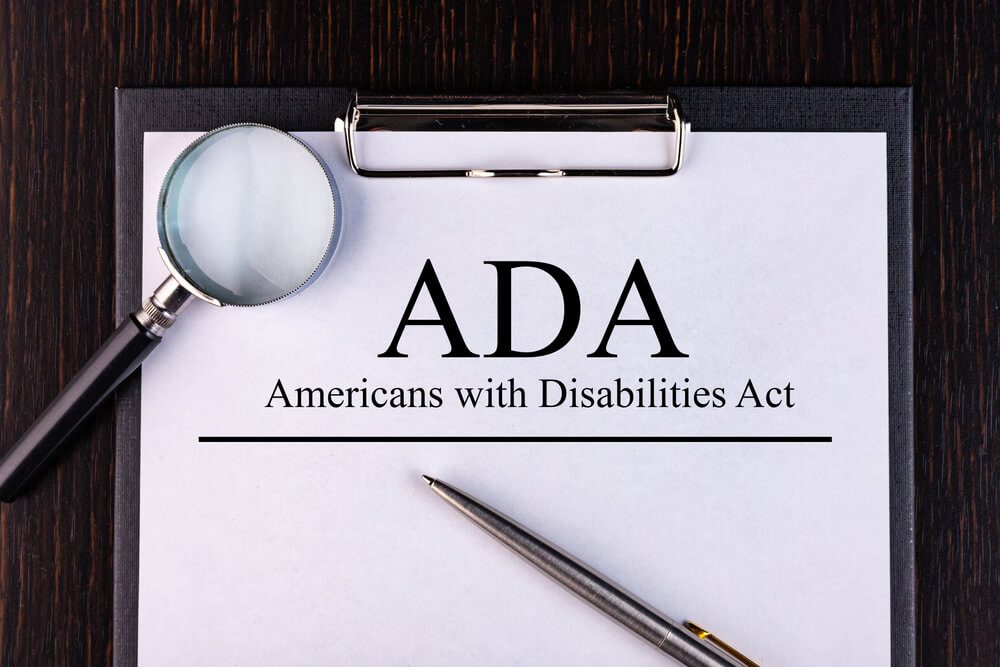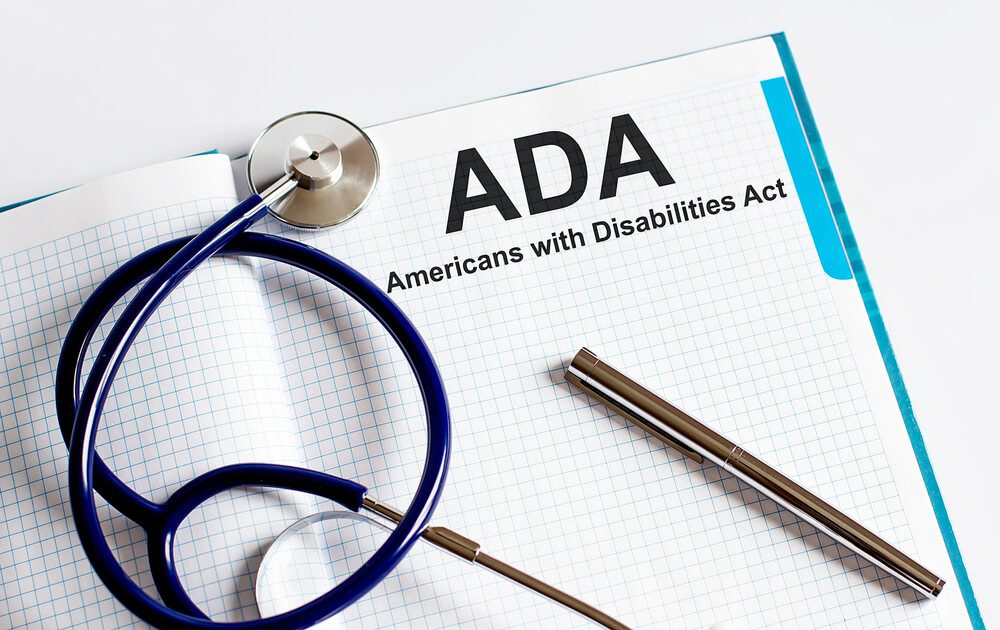
Is Your Website ADA Compliant? Here Is a Checklist To Help
ADA compliance is important for businesses to consider because of its benefits and the steep fines that come with non-compliance (up to $75,000 for the first offense). Following the Americans with Disabilities Act (ADA) guidelines helps you serve users better.
Here are what you need to know about the ADA and what you can do to stay within the rules:
- ADA and what it means for your website.
- How to measure your website’s compliance.
- Five strategies to improve your ADA compliance score.
There is a lot to discuss, so get ready to take notes.
Let’s go!
To learn how Digital Authority Partners can create a standout website for you, watch this video!
ADA and How It Affects Your Business Website

ADA, specifically Title III, which focuses on private businesses, is a civil rights law that aims to ensure equal access to facilities and spaces for all Americans. That means removing any barriers or adding a means of access to afford those with disabilities the same experiences.
In a nutshell, it means paying attention to the challenges of people with disabilities and how their experiences differ from others. For example, when designing your website, how often did you consider accessibility for people with visual impairments or problems with focusing?
Various aspects of your website affect the user experience (UX), but that number increases for people with disabilities who may need extra help to have the same access as others. Apart from being the law, complying with ADA boosts UX for everyone else, which adds to your search engine optimization (SEO).
More and more users rely on mobile devices to search online, meaning that text font size is an existing concern. Adjusting it to meet ADA rules is a small step, but it ultimately benefits your users.
Another change that comes with mobile search is the use of voice search, which would help users with vision impairments access your website. In fact, everyone can use it to interact with your website through screen readers. Overall, following ADA is rewarding for businesses.
How to Identify and Measure Your Compliance Level
Due to the high stakes of failing to comply with ADA, you might wonder how you can assess your fit within its guidelines. Moreover, you probably want to know where to begin making website changes. While ADA sets the rules, it gives no specifics.
Web Content Accessibility Guidelines (WCAG) are, therefore, necessary. The WCAG sets the standard for what and how websites meet ADA’s rules. It has seen many changes over the years, and the current one in use today is WCAG 2.2, which you should follow.
It contains a conformance section with grades ranging from A to AAA. Each level is present and indicated for each guideline to make it easier to follow and apply. If you prefer to automate or outsource an assessment, note that some tools and companies exist for that exact purpose.
5-Point Checklist To Make Your Website More ADA Compliant

ADA compliance benefits everyone, but how do you keep up with the points needed to stay within ADA (and WCAG) guidelines? Make a simple checklist to ensure that you hit all of the critical points. Using a tool, such as the Lighthouse extension for Chrome, helps find pages with issues.
Here is a quick five-point checklist to use to start or improve your ADA compliance:
1. Keep Your Website Designs Minimalist
The best way to start ADA compliance is with a simple, minimalist website design. This means avoiding flashy colors, clashing palettes, and fancy fonts that do not add much to UX. Design is vital because typography, including typeface, point size, and spacing are all important.
The wrong font size or typeface, however, can result in a lawsuit because of how much it renders any text unreadable to someone with vision impairments or dyslexia. Text color and its contrast with your website’s background may also hinder people with disabilities from fully using your service.
2. Enable Voice Recognition for Browsing
Voice recognition is another quick fix to apply to improve ADA compliance. Many people with disabilities, including people with learning disabilities, use screen readers to interact with online content. Enabling voice recognition on your website gives them access to your content.
With screen readers, people are able to use voice search to browse your website, so enable the voice recognition feature. Its use goes beyond that. Voice search should also be included in your SEO strategy.
3. Give Users Agency and Time to Focus
Other areas of concern for ADA compliance are agency and focus. Some people with disabilities may struggle to maintain their focus. Allowing them to set their own pace is vital to giving them access. For example, auto-playing videos, animated images, and auto-scrolling are distracting elements.
As much as possible, turn off these features or allow users to manually turn them off to keep them focused on other parts of the page. Use spacing to segment your pages and make them easy to navigate. Keep any distracting elements to the barest minimum allowed, or none at all.
4. Add Meta Tags to Rich Media Content
Meta tags, particularly image alt tags on rich media, support screen readers. That makes them crucial to increasing website accessibility and ADA compliance. Accurate and descriptive meta tags allow individuals with vision difficulties to enjoy rich media content.
Any images, videos, and photos on your page should have relevant tags that provide context or add to the person’s understanding of the text’s content. While they might not see or fully enjoy the media as another person would, providing as similar an experience as possible is important.
5. Include Audio and Video Transcriptions
Like meta tags, transcripts help people using screen readers access and consume video and audio content. Transcripts and captions are necessary to cover all bases for providing accessibility to your website content.
People with hearing disabilities also benefit from transcripts, especially for audio-only content, because they would otherwise have no means of consuming it. Captions are part of the video, but transcripts come as a separate file that you must link to the audio or video file.
Summing Up
Everyone deserves to enjoy equal access to the same content. People with disabilities face barriers to accessibility and usability, but that does not mean you cannot adjust your website to accommodate their needs. ADA compliance also boosts UX for everyone else, so it is a win-win.
Need help making your website ADA-compliant? Contact Digital Authority Partners (DAP) to learn how we can help.
Want To Meet Our Expert Team?
Book a meeting directly here




